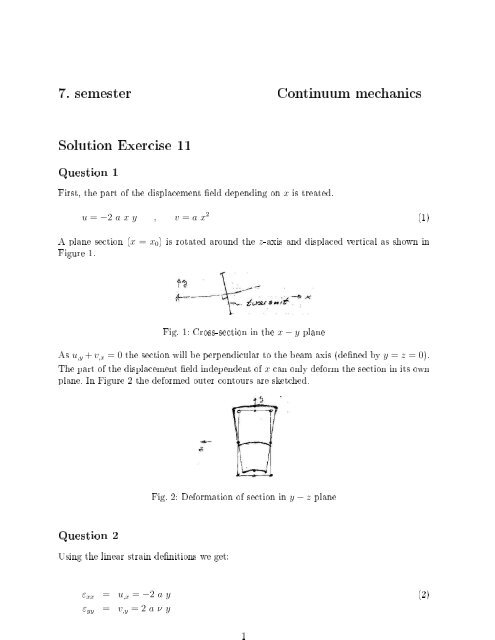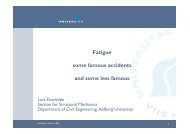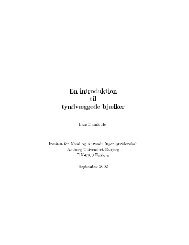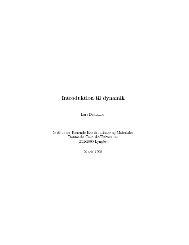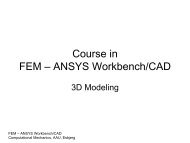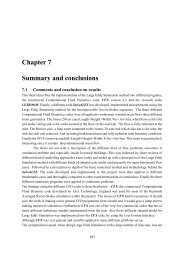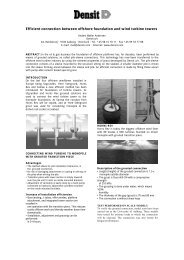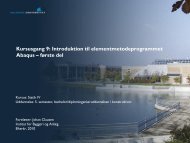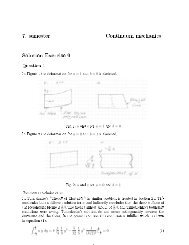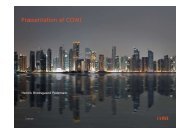7. semester Continuum mechanics Solution Exercise 11
7. semester Continuum mechanics Solution Exercise 11
7. semester Continuum mechanics Solution Exercise 11
Create successful ePaper yourself
Turn your PDF publications into a flip-book with our unique Google optimized e-Paper software.
2ε zz = w ,z = 2 a ν yε xy = 1 2 (u ,y + v ,x ) = 1 (−2 a x + 2 a x) = 02ε xz = 1 2 (u ,z + w ,x ) = 0ε yz = 1 2 (v ,z + w ,y ) = 1 (−2 a ν z + 2 a ν z) = 02Question 3We assume that the only non-negative stress is σ xx and using Hooke's law we get thecorresponding strains:ε xx = 1 E σ xx (3)ε yy = −ν 1 E σ xxε zz = −ν 1 E σ xxε xy = ε xz = ε yz = 0Comparing the strains in equation (3) with the strains in equation (2) we get:σ xx = −2 a y E (4)and the rest of the stresses is 0. It is therefore shown that the strain state dened inquestion 2 correspond to a normal stress in the x-direction dened in equation (4).Question 4The resulting bending moment around the z-axis is given as:M z =∫−y σ xx dA =∫ h2y 2 a y E b dy = (5)− h 2= E b 2 a [ 1 3 y3 ] h 2− h 2= 2 a E b 1 12 h3 = 2 a EIQuestion 5First the displacements in the y-direction are considered.
3Fig. 3: Deformation in y-direction, Poisson eectDue to the eect of Poisson's ratio every vertical element is prolonged in the top andcompressed in the bottom as illustrated in Figure 3 for the cross-hatched element. Thedeformation is composed of a normal strain in the y-direction and shearing between theindividual vertical elements.Now the displacements in the z-direction are examined.Fig. 4: Deformation in z-direction, Poisson eectDue to the eect of Poisson's ratio every horizontal element is either stretched (in the top)or compressed (in the bottom). The deformation is composed of a normal strain in thez-direction and shearing between the individual vertical elements.The total deformation state correspond to bending around the x-axis as illustrated inFigure 2. The curvature is due to the tension of the upper part and compression of thelower part.Question 6The displacement in the free end is found by use of Virtual Work, see Figure 5.Fig. 5: Bending moments for load and virtual force
4By integration of the real curvatures and the virtual bending moments we get:u(l) =This gives:a = 1 2∫ l0MEIMrealM virtual dx = 1 EI2 l M l 1EI = 1 2 Mwhich is in accordance with the result in question 4.l2EI(6)(7)


